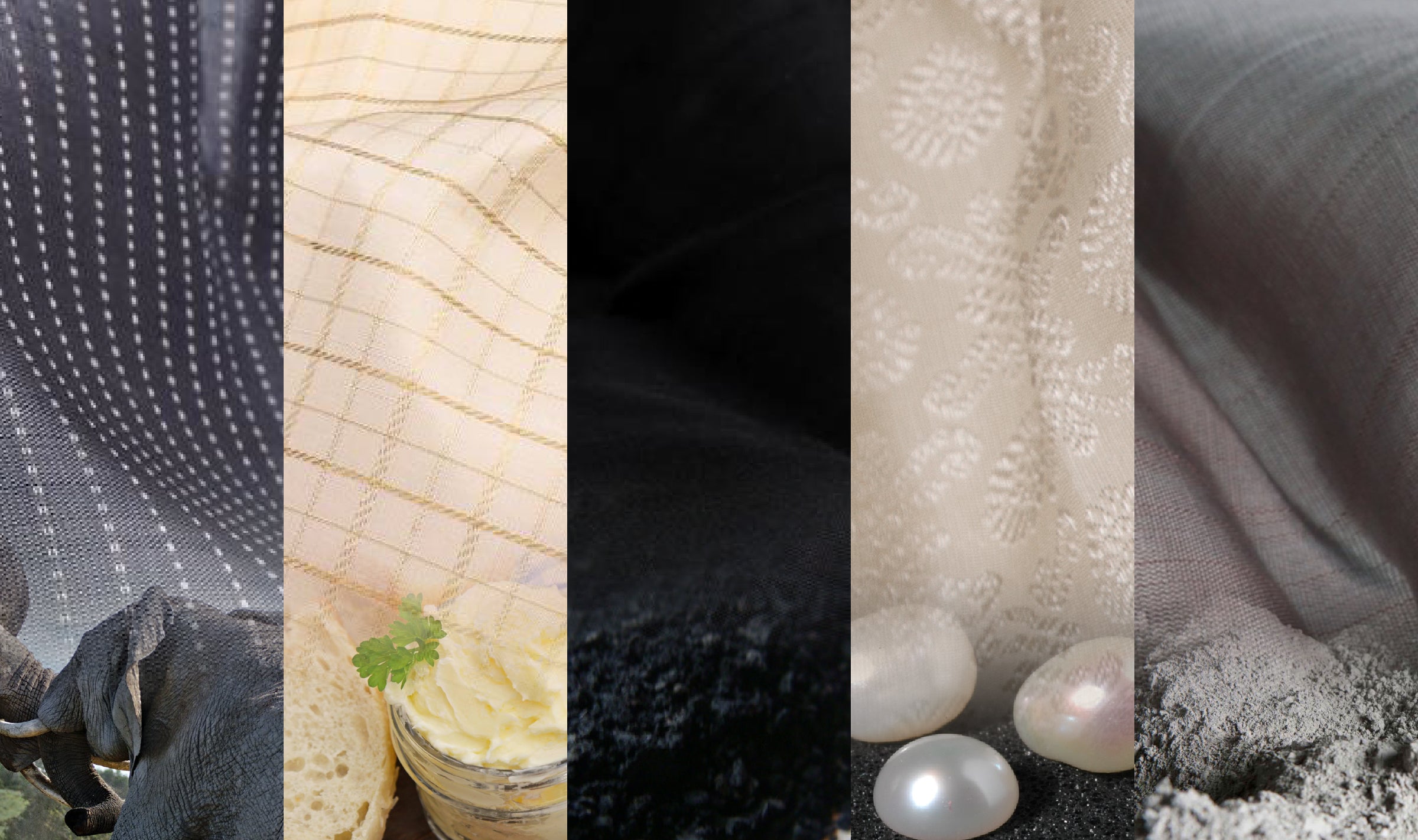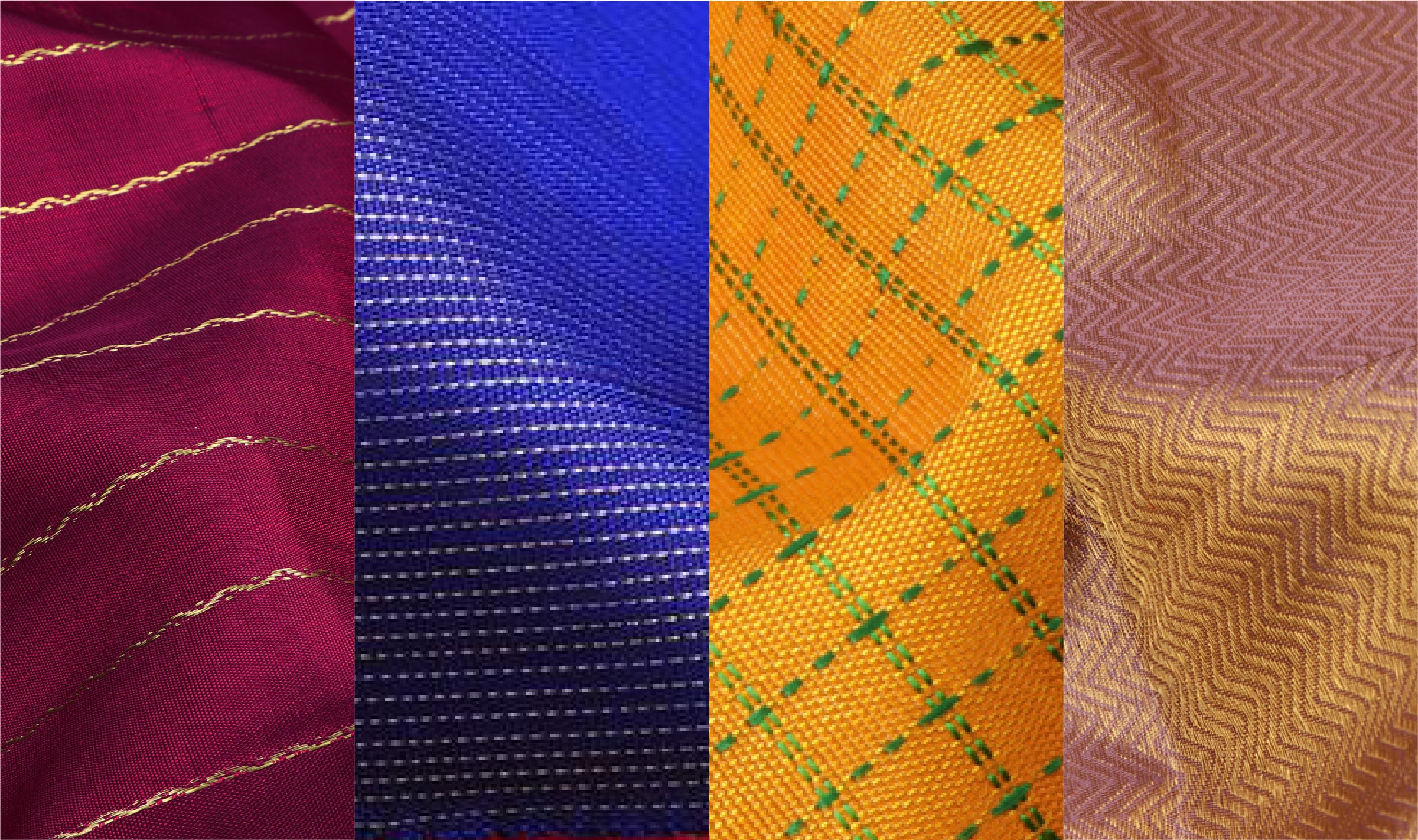Varna Sutra Redux : Of Colour And Light

Over the past few months, in Kanakavalli's Varna Sutra, Sreemathy Mohan has traveled a landscape of colour in the kanjivaram, tracing inspiration and custom, colour and context that are imbued in the weave of this beautiful drape.
As we approach the Festival of Light, we look back to celebrate the many bursts of the Varna Sutra colour stories...join us, as Aneesha Bangera connects the dots set forward in earlier Varna Sutra articles....
Varna Sutra - Redux
Within the drape of a single kanjivaram sari, you can traverse a world of colour inspired by home, hearth, nature and nurture – from chilli reds and turmeric yellows, ubiquitous in a South Indian kitchen, to the delicate two-toned hues of a peacock’s throat, and the particular shade of a tender mango leaf that symbolises the onset of summer.
The kanjivaram's colour stories unfold in a beautiful lexicon – rich in local flavor, indigenous and evocative. The specificity and beauty of the Tamil names root the kanjivaram craft in its geographical and cultural landscape, illustrating for us its provenance. Drawing inspiration from spices and vegetables, flowers and birds, as well as objects of ritual and pop culture, each name evokes a season, a fragrance, a memory of childhood…
Classically woven in deep jewel tones, the kanjivaram drape infuses the silks with a sumptuous depth and characteristic lustre. Traditional korvai borders – laboriously handwoven border attachments – give way to stunning contrasts. The occasional expression of motifs in vivid silken yarn or tonal jacquard patterning on silk further showcases the vibrant interplay of warp and weft and the endless possibilities for juxtaposition of colour. The palette thus gives form and drama to the drape, emphasising its centrality in the craft.

Right from the the kitchen, a veritable riot of hues, we come across the pale green of ‘elakkai’ or cardamom sits in the spice box, beside the festive ‘pasum manjal’ or turmeric yellow, a colour tied closely to tradition. Loved not only for its delicate flavour and aroma, but for its beautiful golden orange tone is ‘kunkungamapoo’ (saffron). There are gentle hints of orange in ‘thakkali’ or tomato red, while the glowing red of ‘milagai’ (chillies) is reminiscent of the classic bridal kanjivaram. These bold tones are punctuated with the delicate onion pink of ‘vengayam’ and the lovely ‘elumichai’ or lemon yellow.

Step into the garden, and shades of green, pink and purple come alive, reflected in some of the kanjivaram’s most beautiful shades. Subtle nuances are distinguished in myriad shades of green – from the union of white and green in young water lilies or ‘alli pachai’, and the raw earthiness of moss green in ‘paasi pachai’, to ‘manthulir’: the delicate green-red of tender mango leaves that arrive with the summer.


The greens are accented with vibrant colour bursts in the form of flowers. The vivid orangered of ‘chemparuthy’ or hibiscus, a flower used in daily worship in South Indian homes, finds its way into our saris. The fragrant garden rose, ‘pattu roja’, is a clear, pretty pink that is woven into beautiful bridal garlands, while ‘vadamalli’ is the gorgeous purple shot with pink of the globe amaranth flower. Aubergine has a profusion of regional names, and in the kanjivaram palette it is ‘kathiri’ which distinguishes the purple shades of both fruit and flower. A flower that blooms every winter, ‘december poo’ comes in many hues but is known for its deep violet avatar.

A South Indian childhood isn’t complete without memories of ‘mambazham’ or ripe mangoes stolen from the kitchen and ‘naval pazham’, the juicy fruit of the indigenous jamun tree. Highlights of the summer, both have established themselves firmly in the kanjivaram palette: the former a delicious shade of golden yellow and the latter a beautiful violet shot with crimson, like the berries from which it takes its name.

From flora onto fauna, and the parrot, which isn’t just a beloved motif of the kanjivaram, but is evoked through colour in ‘kili pachai’ or vivid parrot green. The striking interplay of warp and weft is showcased in ‘mayil kazhuthu’ the lustrous green-blue shade inspired by the feathers on a peacock’s neck. Inspiration for colour comes from every imaginable form, including ‘pon vandu’, the iridescent golden beetle’s distinctive green-yellow hue. Elephant grey, ‘yanai’, pays tribute to the majestic and gentle giant, and acquires a beautiful sheen on the fine silk.

Not only do the kanjivaram’s colours visually capture the range and beauty of the colours of nature they represent, but also imbibe their deep symbolism – poetic, cultural and religious.
The striking hues of precious gems are interpreted in the kanjivaram’s jewel tones: the ruby red of ‘kempu’ that evokes the intricacies of Tanjore paintings and temple jewellery; the exquisite blue-green of turquoise and the light blue of ‘neelam’ or sapphire.

So intrinsic is colour to the meaning of life and culture in the South, that nearly every shade of the kanjivaram has deep significance, particularly spiritual, attached to it. Kanchipuram is often called the town of a thousand looms and a thousand temples; and much of the inspiration for both tone and motif comes from the depiction of gods and goddesses, as well as the architecture of worship.
Lord Krishna, also referred to as ‘Shyama’, is referenced in the beautiful two-toned ‘Krishna Meghavarnam’ (violet shot with red); the colour of storm clouds. The stunning vermillion of the powder used for religious markings, most notably in the sindhoor or tilaka that married women wear on their foreheads, comes alive in the striking ‘kumkuma’. A delicate shade of blue with hints of green is called ‘Ramar’ and is the colour given to dolls of Lord Rama that decorate homes during the Golu festival.

The distinctive hue of ‘sandhanam’ or sandalwood, off white gently tinged with yellow, invokes its calming fragrance closely linked to memories of prayer.
One of the most exquisite colours of the kanjivaram is ‘arakku’, or lac, a gorgeous shade of pink blossoming into scarlet. A rich, feminine hue, it is a favourite colour for muhurtham or bridal saris. Another beloved shade is the steely grey of lead in ‘eiyam’ – a colour reminiscent of vibhuti or the sacred ash of Hinduism – that lends the silk an exquisite metallic lustre.

As much as the kanjivaram palette draws from tradition and an ancient heritage, it has also remained current, taking inspiration from elements of popular culture. A colour that is likely to be found only in a kanjivaram store and nowhere else in the world is ‘M S Blue’. This shade of middle sea blue came to be synonymous with the legendary Carnatic singer M S Subbulakshmi. Named after the shocking hue of the fizzy drink, ‘Fanta orange’ is perhaps the colour most symbolic of the kanjivaram in a modern landscape – seamlessly weaving together the old and the new, the traditional and the contemporary.

Zari, the fine gold thread that embellishes the sari, is as integral to the kanjivaram as colour - crafted by wrapping silk thread with molten silver that has been flattened into a wire, and then electroplating it with gold, pure zari is a thing of great beauty. Imbuing the kanjivaram sari with a rich splendour, the silver and gold thread work transforms the lush silk into the finest heirloom and bridal drapes. Most of the motifs you see on the silken drape would traditionally have been executed in gold zari, often in the ‘adai’ technique. The weaving of motifs in ‘adai’, that is entirely by hand without the help of a jacquard machine, results in exquisite detail and striking relief. The laborious, highly skilled weaving technique allows for the execution of intricate patterns on a larger scale; occasionally taking the form of motifs within motifs, or beautifully complex, labyrinthine designs that come to life on the drape.
Emerging from a dynamic and rich cultural landscape, the story of the kanjivaram’s colours, much like the story of the craft itself, is fascinating and beautiful; combining the mythical with the familiar, and the spectacular with the everyday.
We hope you enjoyed Kanakavalli's Varna Sutra series as we bring them all together in a festival of colour during this festival of light. All of us at Kanakavalli wish you and your loved ones a very happy Diwali!
- Aneesha Bangera for Kanakavalli, research by Sreemathy Mohan
MISSED THE VARNA SUTRA SERIES?
READ THE ARTICLES RIGHT HERE -
BROWSE AND SHOP THE SARI COLLECTIVES FROM OUR HOME PAGE !








